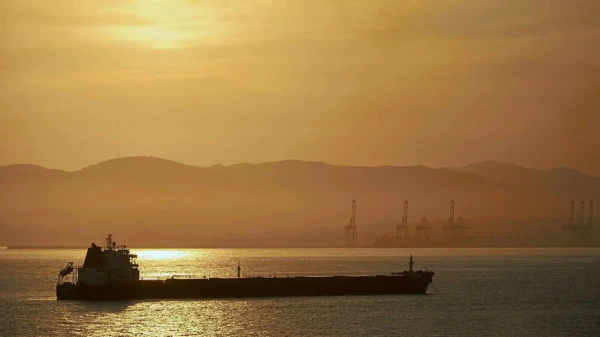
A special port has been designated for such cargoes in the south of the country.
China has designated a special port for receiving liquefied gas from the U.S.-sanctioned "Arctic LNG 2" project. Now, there are early signs that China is also preparing to deliver Russian cargoes.
China is ramping up efforts to import Russian LNG, laying the groundwork for its own "shadow fleet," Bloomberg reports. Practices related to vessel registration and movement are beginning to mirror those of Russian suppliers, who have established exports of a significant portion of oil bypassing sanctions and formed a similar fleet for LNG shipments last year.
According to satellite images and vessel movement data analyzed by Bloomberg, the tanker CCH Gas carrying a batch of sanctioned Russian LNG is approaching a Chinese port while concealing its location. Its owner, CCH-1 Shipping, has an address in Hong Kong that matches the address of another company, Samxin Secretarial Services, which provides "mailbox" services, i.e., formal registration; this is a common practice for companies secretly trading Iranian or Russian fuel. Previously, CCH Gas took on cargo at sea from a sanctioned Russian tanker.
Another LNG tanker, recently renamed Kunpeng, has appeared near Singapore. According to the shipping database Equasis, earlier this year, ownership and management of the vessel were transferred to little-known companies in China and the Marshall Islands. The addresses of these companies are linked to firms that traded other types of fuel from blacklists.
The opaque ownership structure of LNG tankers remains a rare phenomenon due to the relatively small size of this sector of the shipping industry, which requires specialized technical skills. The number of companies owning LNG tankers is relatively small, with about 800 such vessels in the world.
Meanwhile, the oil shipping sector is significantly larger: there are nearly 8,000 oil tankers in the world, of which about 600-700, mostly older vessels, are now estimated to be involved in the activities of the Russian shadow fleet.
Since last year, Russia has also begun forming a shadow fleet of LNG tankers, gathering about a dozen vessels registered in shell companies from Russia to India, Bloomberg notes. Until recently, "Arctic LNG 2," which has been unable to find buyers due to sanctions since the beginning of 2024, was exporting gas only to Novatek's floating storage units in Kamchatka and the Murmansk region. However, since the end of August, it has been accepted by the Beihai port in southern China. The first cargo was delivered there just before Vladimir Putin's visit to China at the end of August.
Since then, Beihai has received at least a dozen tankers with Novatek gas. Chinese authorities have apparently specifically designated this port for receiving LNG from Russia: it had very limited international connections and has now stopped accepting other vessels, including those from Chinese companies.
In October, the tanker CCH Gas took on a cargo from the LNG carrier Perle, which was previously named "Pskov" and was blacklisted by the U.S. in January of this year. The transfer took place at sea off the coast of Malaysia, Bloomberg previously reported. In February, Perle, according to Kpler, took on a cargo of LNG from "Portovaya," a medium-tonnage plant of Gazprom in the Baltic Sea, which was sanctioned by the Biden administration in January. After that, the vessel drifted for several months—apparently unable to find a buyer—and in July, it set off around Africa to the east.
In May, Perle, according to Equasis, changed ownership to Hong Kong's CCH-1 Shipping—the same company that owns CCH Gas.












